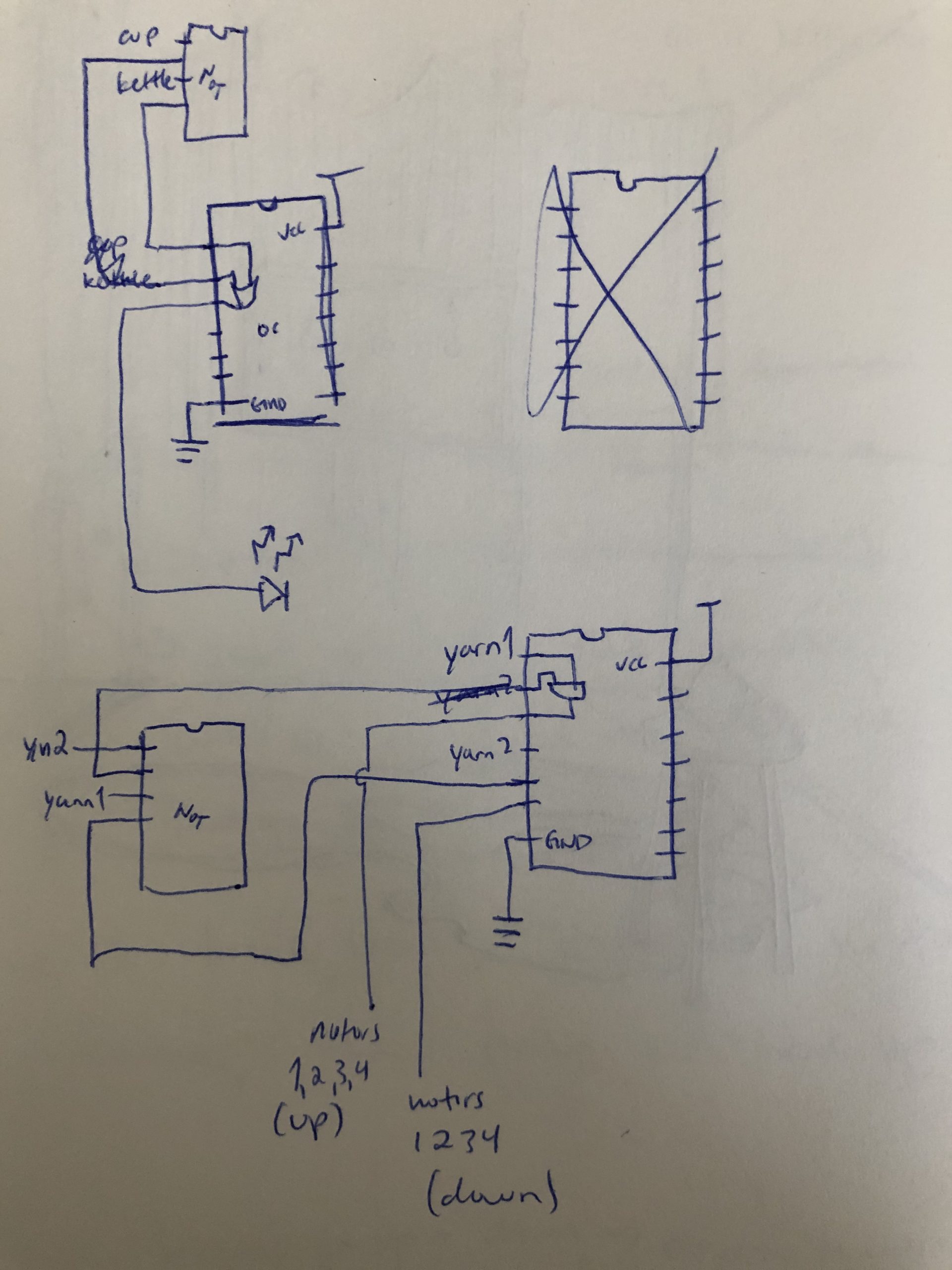
Circuit Diagram

Updated Logic Diagram
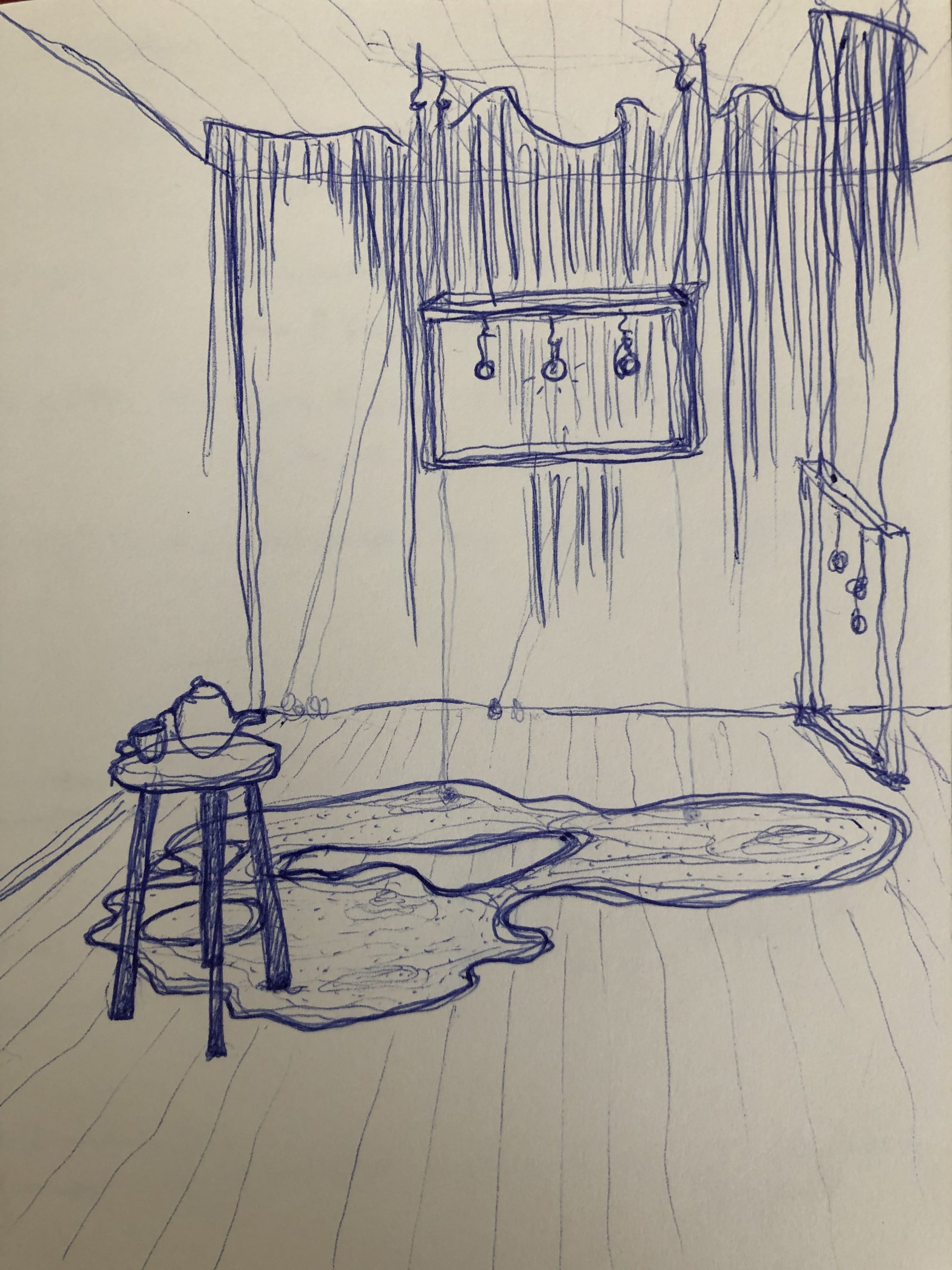
New layout sketch
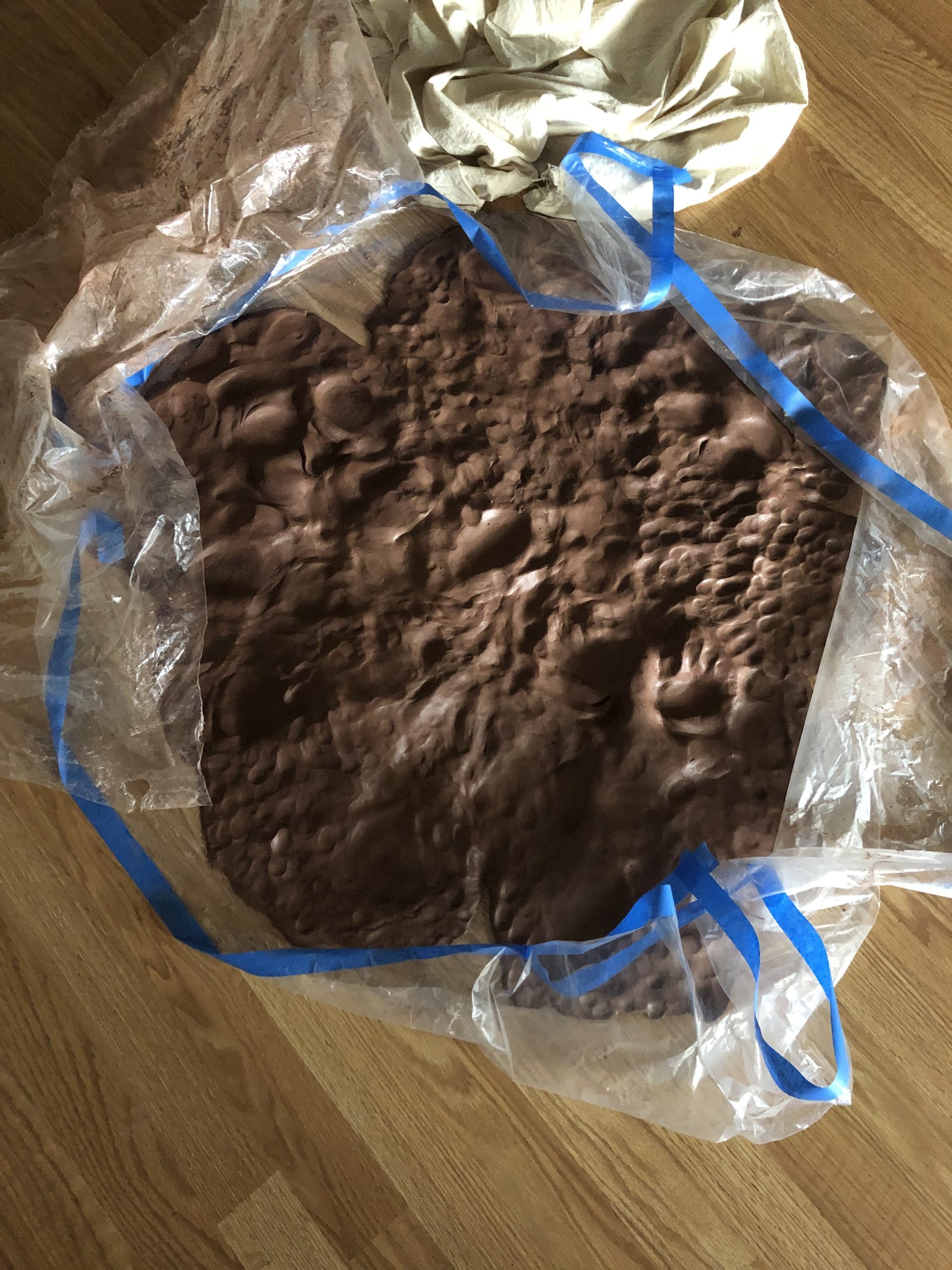
Floor progress
_______________________________________________________________________________________
Process:
- I have been working on finding the right configuration, spatially, for the dance box. The base dimensions I have decided on is 36″ by 36″. There is no specific height, the ceiling height will determine the top of the box, this is somwhere around 10′-11′. I have been using objects from around the house to define trigger points/areas as well to constructing physical boundaries that cannot be crossed by the dancer.

Testing out physical space set-up and dimensions.
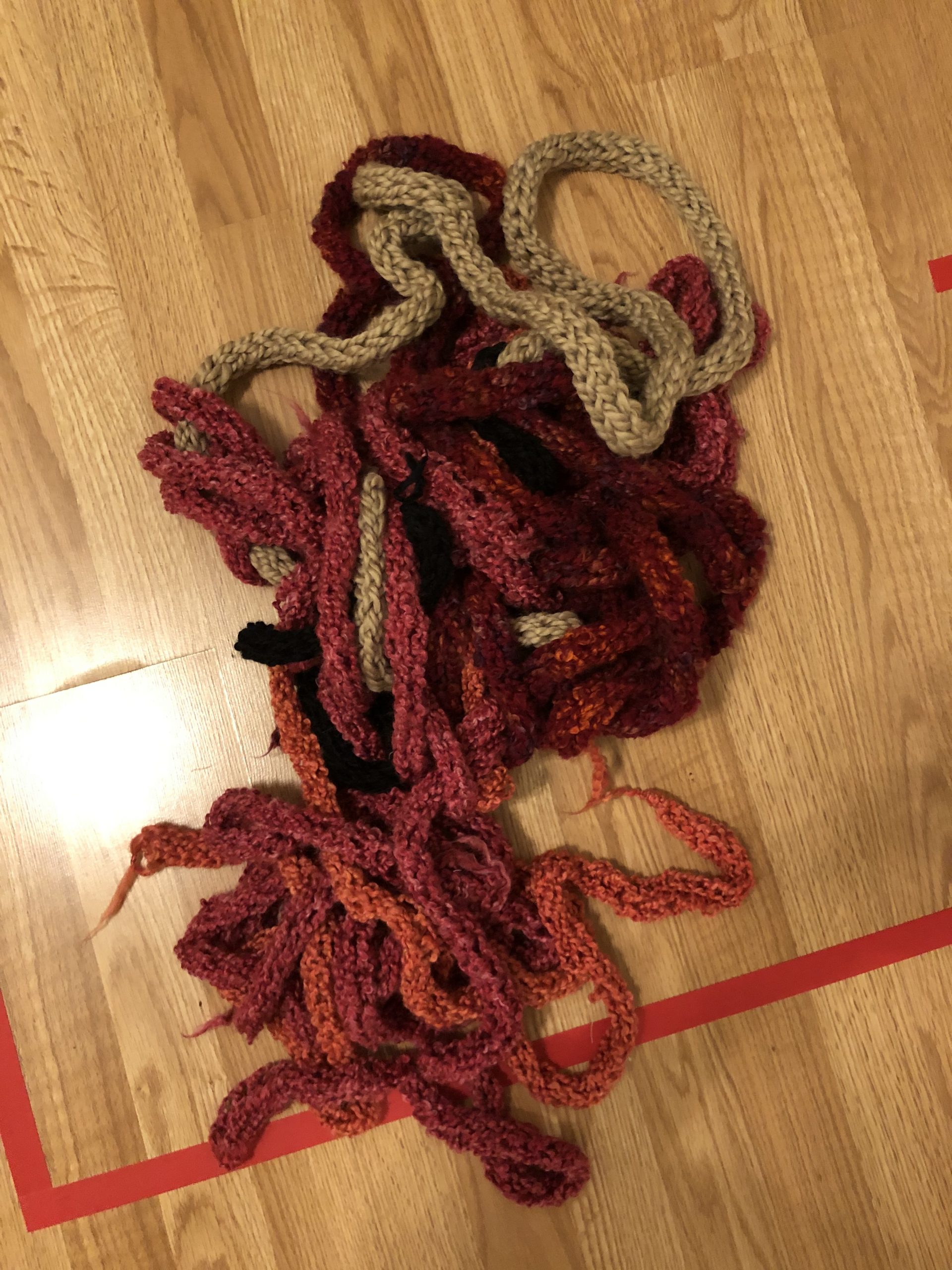
These knit ropes will be used as another switch, they will create two sides of the box. They will have conductive thread going through them so that when both are touched simultaneously, they will act as a switch signaling for something else to happen.
Drawings, Diagrams, Plans:
word equation – same as last Wednesday
logic diagram – same as last Wednesday
truth table – same as last Wednesday
The electronics I will need include: AND gate and an OR gate.
_______________________________________________________________________________________
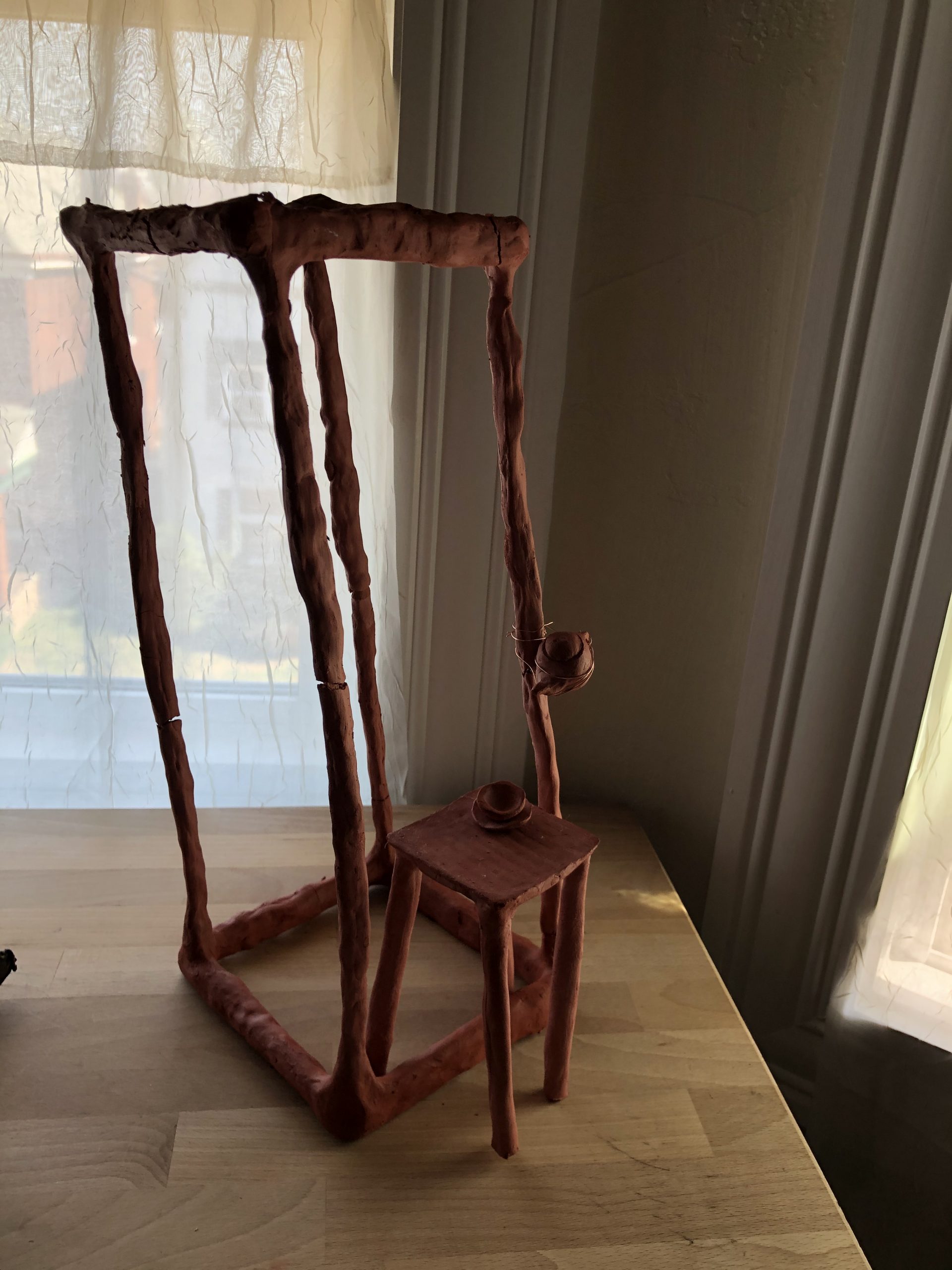
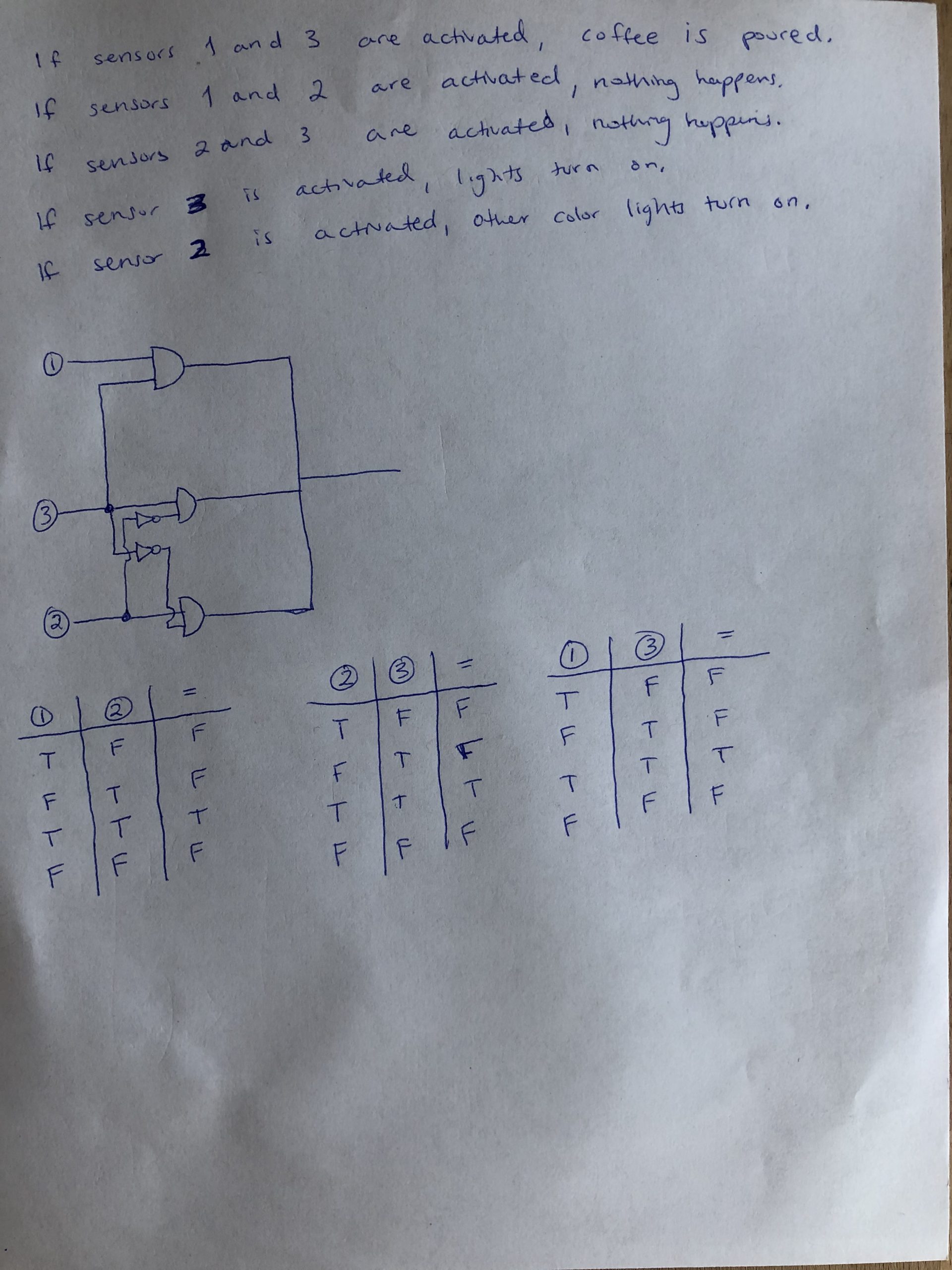
_______________________________________________________________________________________
- Dance Box
- Interaction mode: Body engaging, dance (with activation points to refill coffee, turn lights on, and turn lights off).
- Intended siting: Indoor, spacious room, dark.
- Intended experience for audience: View a performance or interact directly. For example, in order to get a cup of coffee, you have to perform a dance.
- Theoretical underpinnings (what led you to this): Desire for movement, excessive amounts of energy because of being at home a lot. I find myself dancing around my house a lot, thought it could be interesting to incorporate that into my project.
- Relevance to you and your practice: Responsive environments are important to me, I find that they ground me in the present moment, something I struggle with. Recently I’ve been drawn to create work based around the present moment more than ever before.
- Updated drawing are below the text.
- Listing of needed materials: Four times 6’ 2×2 wood planks, Eight times 3.5’ 2×2 wood planks, nails, hammer, break beam sensors, adhesive (tape), lights/light strips strips (4) for each vertical part of frame.



_______________________________________________________________________________________
- Dance Box for an 80s-esque music video
- Interaction mode: Body engaging, dance (maybe a game, which light to activate, etc)
- Intended siting: outside controlled space at night or indoor dark space
- Intended experience for audience: view or interact directly (for the purpose of the video, it would probably be a choreographed dance with one person.
- Theoretical underpinnings (what led you to this): Desire for movement, excessive amounts of energy because of being at home a lot. I find myself dancing around my house a lot, thought it could be interesting to incorporate that into my project.
- Relevance to you and your practice: Responsive environments are important to me, I find that they ground me in the present moment, something I struggle with. Recently I’ve been drawn to create work based around the present moment more than ever before.
- Relevant word equation, logic diagram and truth table:
- 3 drawings showing the exposed build:

- Listing of needed materials: Four times 6’ 2×2 wood planks, Eight times 3.5’ 2×2 wood planks, nails, hammer, motion sensors, adhesive, arduino, lights/light strips strips (8) for each side top and bottom of frame.
- Possibly developing the “Soft Keyboard” further, flattening the keyboard to serve as a reactive carpet. This carpet would react as point on it were touched. The music would react to the tempo of the dance and to the number of people dancing at once. It would fluctuate between two different types or music, ambient and techno. The carpet would create a sort of “dancing in your living room” environment, hence the choice of house music.
- Interaction mode: Body engaging, dance
- Intended siting: Home or Indoor Public Space
- Intended experience for audience: Interactive, anyone can dance on the carpet and enjoy the variation in music as the dancers change.
- Theoretical underpinnings (what led you to this): I’ve been trying to find ways to make music interactive. Traditionally, the audience listening can’t have an input on the music, the only way they could interact is by reacting to music. Defining a basic set of rules to how the music reacts to the audience will ensure that the music doesn’t change too abruptly but overall it’s up to the audience to change the music through their dance.
- Relevance to you and your practice: Builds on a previously explored concept, the “Soft Keyboard”. I’m interested in allowing the users control the output of the work they are experiencing.
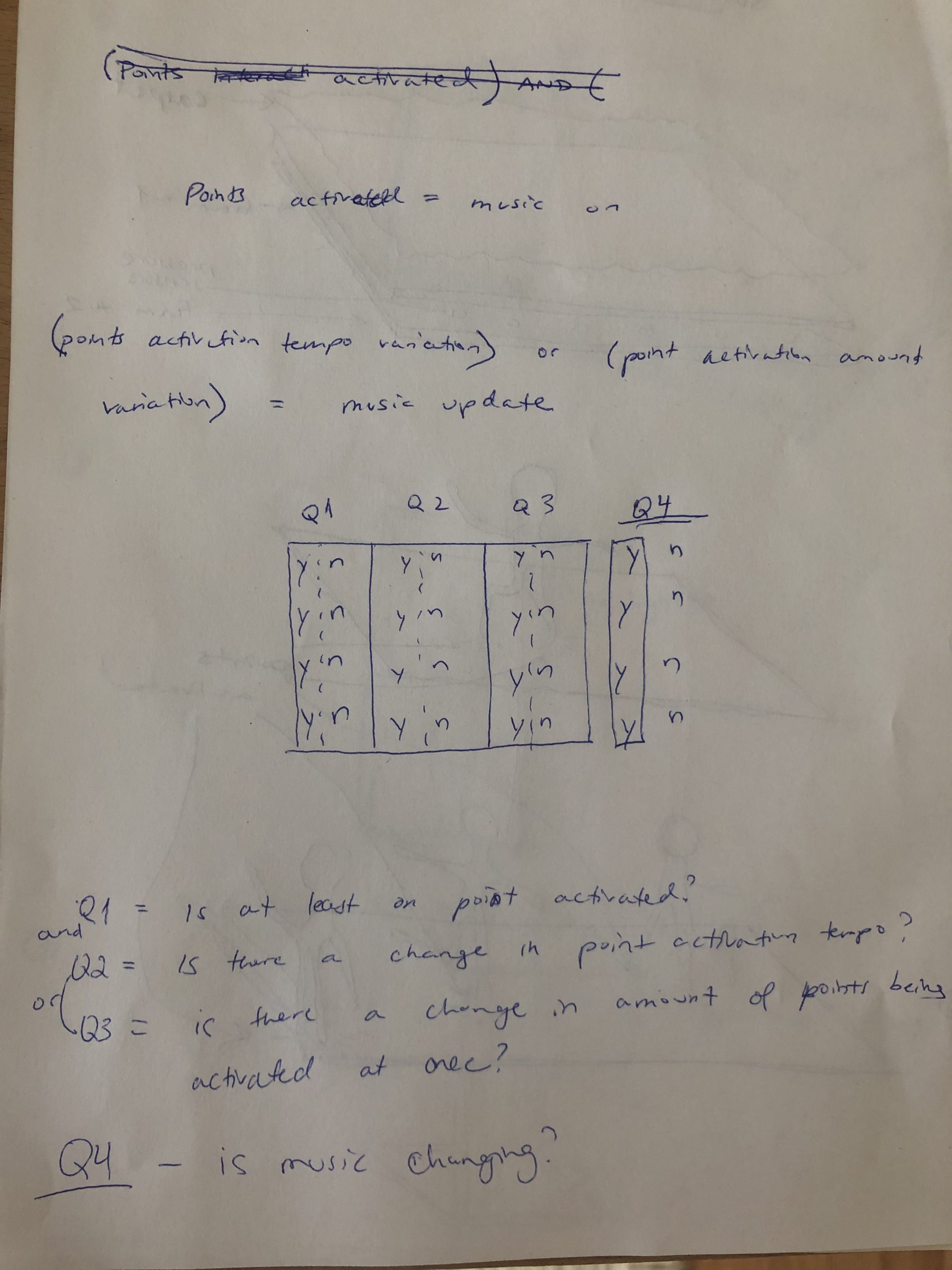
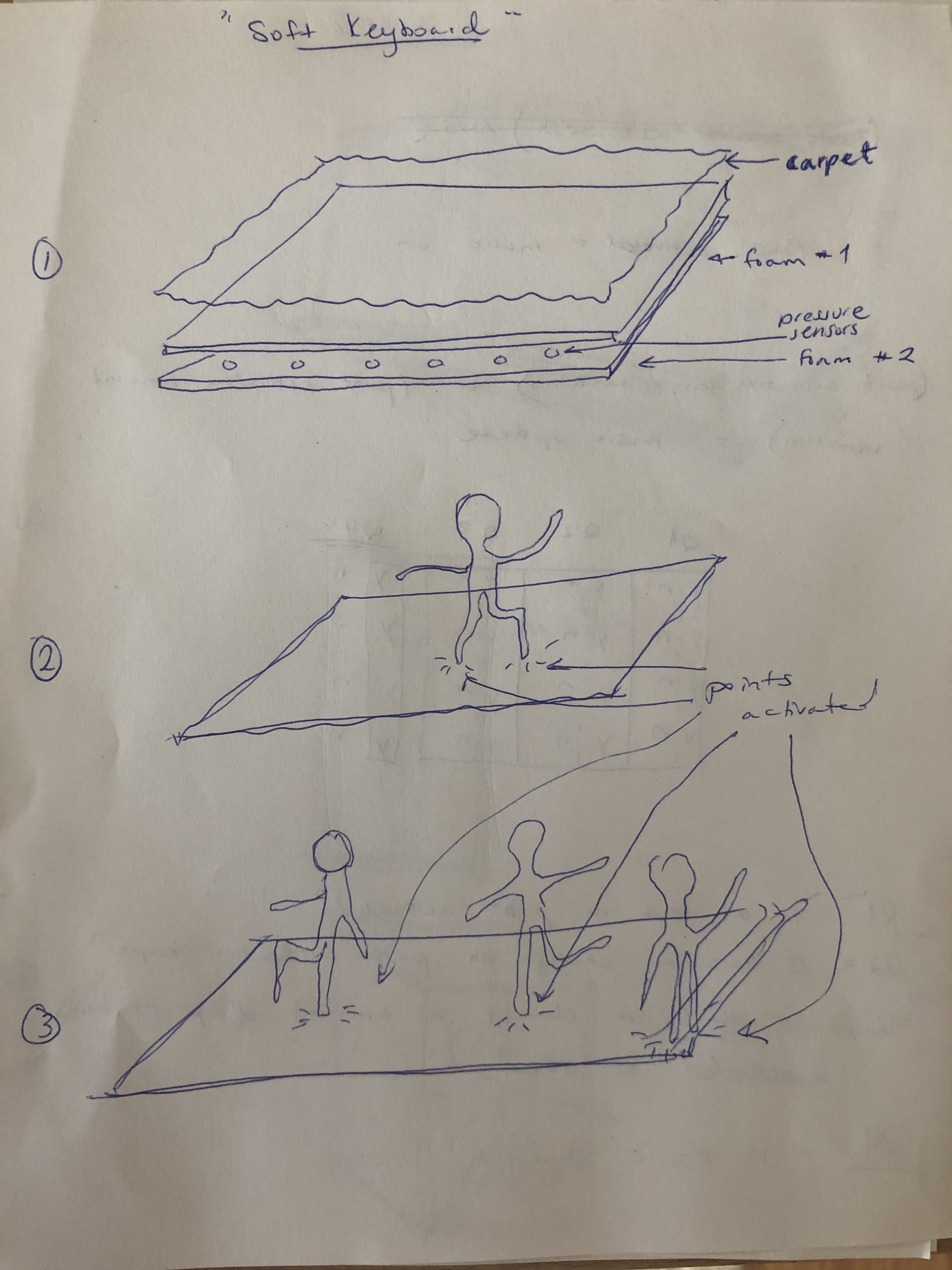
- Listing of needed materials: Some sort of foam or squishy sheet material, pressure sensors, fabric to cover foam, arduino.
- References:
- Wind and Sheer lightweight fabric
- Interaction mode: Reflective and observation based only, with fabrics dividing spaces.
- Intended siting: Outside in a calm environment, perhaps a park. If not outside, at home.
- Intended experience for audience: Reflective, personal, relaxing.
- Theoretical underpinnings (what led you to this): Mindfulness of your surroundings is essential to finding comfort. Being aware help you realize where you are happy. I tried to think of something could create a peaceful and reflective environment.
- Relevance to you and your practice: awareness of spacial design and layout
- Relevant word equation, logic diagram and truth table
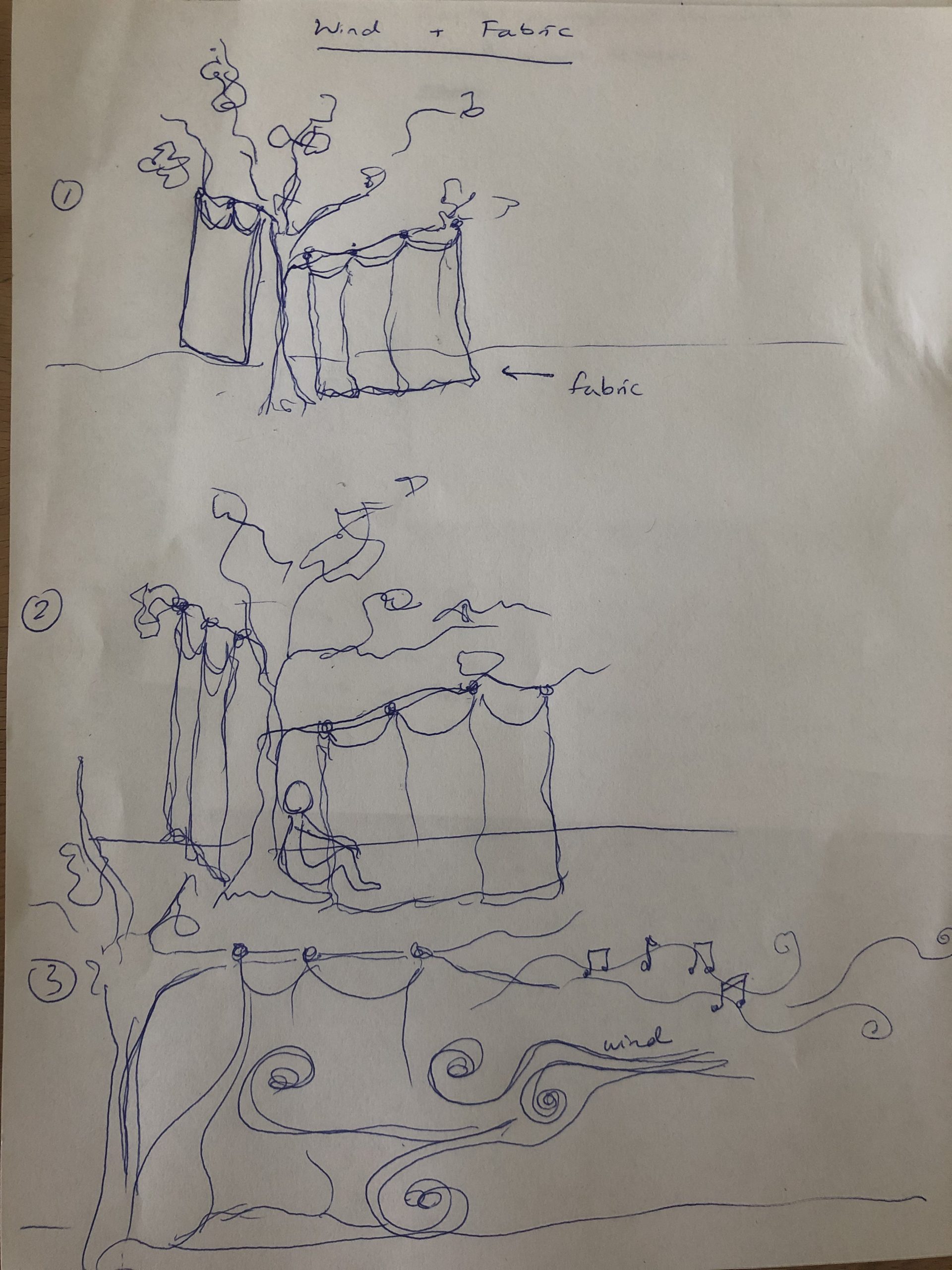
- Listing of needed materials: Sheer fabric, hooks, motion sensors
Comments are closed.